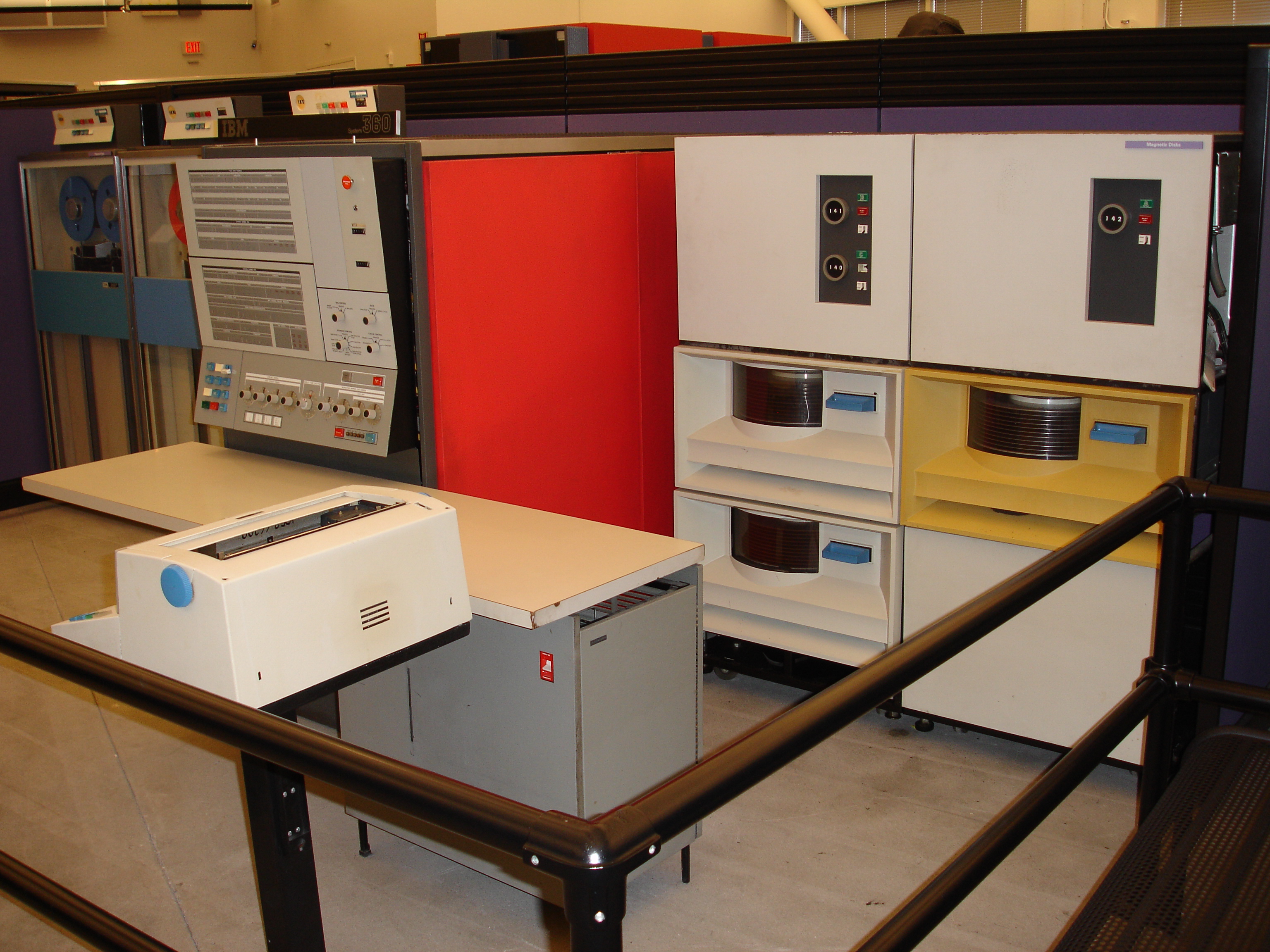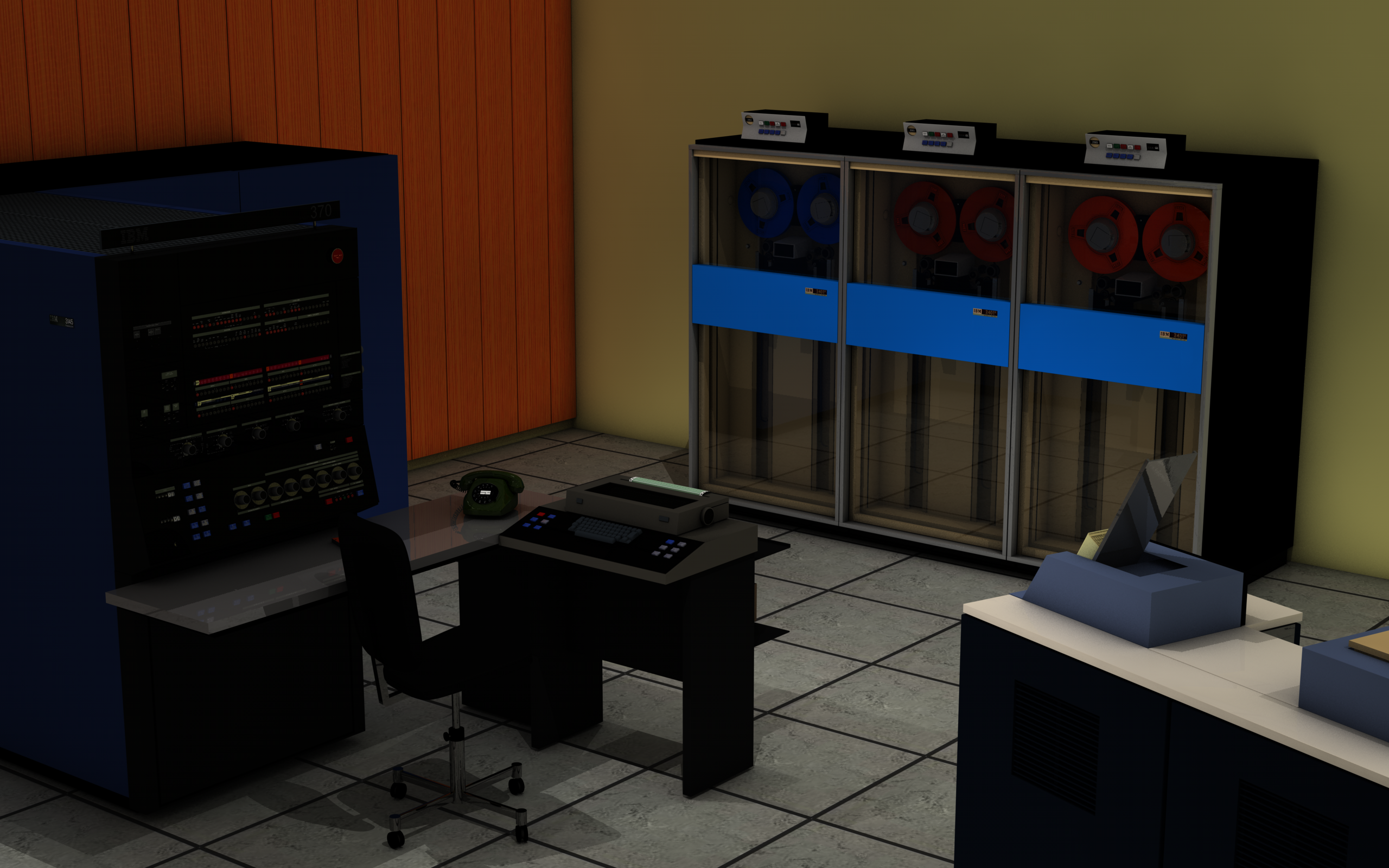|
IBM 3148
The IBM System/370 Model 148 (and the Model 138) were both announced June 30, 1976 Not only were they both more powerful and better in price/performance than the IBM System/370 Model 145 with a 3145-3 CPU and the IBM System/370 Model 135 with a 3135-3 CPU, respecitfly, but lower in price. The 148 and 138, both of which were withdrawn November 1, 1983, were marketed as followups for those wishing to upgrade, respectively, their 370/145 and 370/135 systems. Expanded capabilities The 148 had four times the ''reloadable control storage'' of the 145, enabling or enhancing features such as: * '' APL Assist * ''Extended control program support'' - going beyond the language-specific APL Assist, this had wider scope, reducing CPU cycles needed to run the operating system. A new model of the IBM 3203 printer family, the Model 4, was announced. Rated at 1200 Lines/Minutes, it was intended to provide already-available 1200 LPM printing, but in a more compact form. Field upgrades Sometime ... [...More Info...] [...Related Items...] OR: [Wikipedia] [Google] [Baidu] |
System/370
The IBM System/370 (S/370) is a model range of IBM mainframe computers announced on June 30, 1970, as the successors to the System/360 family. The series mostly maintains backward compatibility with the S/360, allowing an easy migration path for customers; this, plus improved performance, were the dominant themes of the product announcement. In September 1990, the System/370 line was replaced with the System/390. Evolution The original System/370 line was announced on June 30, 1970, with first customer shipment of the Models 155 and 165 planned for February 1971 and April 1971 respectively. The 155 first shipped in January 1971. System/370 underwent several architectural improvements during its roughly 20-year lifetime. The following features mentioned in Principles of Operation are either optional on S/360 but standard on S/370, introduced with S/370 or added to S/370 after announcement. *Branch and Save *Channel Indirect Data Addressing *Channel-Set Switching *Clear I/O *C ... [...More Info...] [...Related Items...] OR: [Wikipedia] [Google] [Baidu] |
The New York Times
''The New York Times'' (''the Times'', ''NYT'', or the Gray Lady) is a daily newspaper based in New York City with a worldwide readership reported in 2020 to comprise a declining 840,000 paid print subscribers, and a growing 6 million paid digital subscribers. It also is a producer of popular podcasts such as '' The Daily''. Founded in 1851 by Henry Jarvis Raymond and George Jones, it was initially published by Raymond, Jones & Company. The ''Times'' has won 132 Pulitzer Prizes, the most of any newspaper, and has long been regarded as a national "newspaper of record". For print it is ranked 18th in the world by circulation and 3rd in the U.S. The paper is owned by the New York Times Company, which is publicly traded. It has been governed by the Sulzberger family since 1896, through a dual-class share structure after its shares became publicly traded. A. G. Sulzberger, the paper's publisher and the company's chairman, is the fifth generation of the family to head the p ... [...More Info...] [...Related Items...] OR: [Wikipedia] [Google] [Baidu] |
IBM System/370 Model 145
The IBM System/370 Model 145 was announced September 23, 1970, three months after the 155 and 165 models. It was the fourth member of the IBM System/370 line of computers, and was the first IBM computer to use semiconductor memory for its main memory instead of magnetic core memory. It was described as being five times faster than the IBM System/360 Model 40. First shipments were scheduled for late summer of 1971. New capabilities The System/370's basic architecture was described as having been an extension, but not a redesign, from that of IBM's 1964-introduced System/360. The 370 introduced some new instructions, such as * MOVE CHARACTER LONG (MVCL) and * COMPARE CHARACTER LONG (CLCL), thereby permitting operations on up to 224-1 bytes (16 MB), vs. the 256-byte limits on the 360's MVC and CLC, but lacked a DAT (Dynamic Address Translation) box. Virtual memory Some said about the early members of the IBM System/370 family, looking back, that they were not "the real 370 li ... [...More Info...] [...Related Items...] OR: [Wikipedia] [Google] [Baidu] |
IBM System/370 Model 135
The IBM System/370 Model 135 was announced March 8, 1971, the only 370 introduced that year. The 135 was IBM's fifth System 370, and it was withdrawn October 16, 1979. Special features Although microcode was not a uniquely new feature at the time of the 135's introduction, having been used in most System/360 models and in most System/370 models introduced so far, the ability to upgrade a system's microcode without changing hardware, by storing the microcode in read-write memory rather than read-only memory, was not common at that time. The read-write memory containing the firmware was loaded from a "reading device located in the Model 135 console"; this allowed updates and adding features to the Model 135's microcode. The "reading device" was a built-in (read-only) floppy disk drive. The 145, introduced the prior year, also had this feature. Optional features The Model 135 was the last of the 370s to be introduced without Virtual memory. Four of the five could be upgraded. Unlik ... [...More Info...] [...Related Items...] OR: [Wikipedia] [Google] [Baidu] |
Control Store
A control store is the part of a CPU's control unit that stores the CPU's microprogram. It is usually accessed by a microsequencer. A control store implementation whose contents are unalterable is known as a Read Only Memory (ROM) or Read Only Storage (ROS); one whose contents are alterable is known as a Writable Control Store (WCS). Implementation Early use Early control stores were implemented as a diode-array accessed via address decoders, a form of read-only memory. This tradition dates back to the ''program timing matrix'' on the MIT Whirlwind, first described in 1947. Modern VLSI processors instead use matrices of field-effect transistors to build the ROM and/or PLA structures used to control the processor as well as its internal sequencer in a microcoded implementation. IBM System/360 used a variety of techniques: CCROS (Card Capacitor Read-Only Storage) on the Model 30, TROS (Transformer Read-Only Storage) on the Model 40, and BCROS (Balanced Capacitor Read-Only S ... [...More Info...] [...Related Items...] OR: [Wikipedia] [Google] [Baidu] |
APL (programming Language)
APL (named after the book ''A Programming Language'') is a programming language developed in the 1960s by Kenneth E. Iverson. Its central datatype is the multidimensional array. It uses a large range of special graphic symbols to represent most functions and operators, leading to very concise code. It has been an important influence on the development of concept modeling, spreadsheets, functional programming, and computer math packages. It has also inspired several other programming languages. History Mathematical notation A mathematical notation for manipulating arrays was developed by Kenneth E. Iverson, starting in 1957 at Harvard University. In 1960, he began work for IBM where he developed this notation with Adin Falkoff and published it in his book ''A Programming Language'' in 1962. The preface states its premise: This notation was used inside IBM for short research reports on computer systems, such as the Burroughs B5000 and its stack mechanism when stack mac ... [...More Info...] [...Related Items...] OR: [Wikipedia] [Google] [Baidu] |
List Of IBM Products
The following is a partial list of products, services, and subsidiaries of International Business Machines (IBM) Corporation and its predecessor corporations, beginning in the 1890s. This list is eclectic; it includes, for example, the '' AN/FSQ-7'', which was not a product in the sense of ''offered for sale'', but was a product in the sense of ''manufactured—produced by the labor of IBM''. Several machines manufactured for the Astronomical Computing Bureau at Columbia University are included, as are some machines built only as demonstrations of IBM technology. Missing are many RPQs, OEM products (semiconductors, for example), and supplies (punched cards, for example). These products and others are missing simply because no one has added them. IBM sometimes uses the same number for a system and for the principal component of that system. For example, the IBM 604 Calculating Unit is a component of the IBM 604 Calculating Punch. And different IBM divisions used the same mo ... [...More Info...] [...Related Items...] OR: [Wikipedia] [Google] [Baidu] |
IBM System/360
The IBM System/360 (S/360) is a family of mainframe computer systems that was announced by IBM on April 7, 1964, and delivered between 1965 and 1978. It was the first family of computers designed to cover both commercial and scientific applications and to cover a complete range of applications from small to large. The design distinguished between architecture and implementation, allowing IBM to release a suite of compatible designs at different prices. All but the only partially compatible Model 44 and the most expensive systems use microcode to implement the instruction set, which features 8-bit byte addressing and binary, decimal, and hexadecimal floating-point calculations. The System/360 family introduced IBM's Solid Logic Technology (SLT), which packed more transistors onto a circuit card, allowing more powerful but smaller computers to be built. The slowest System/360 model announced in 1964, the Model 30, could perform up to 34,500 instructions per second, with mem ... [...More Info...] [...Related Items...] OR: [Wikipedia] [Google] [Baidu] |
IBM System/370
The IBM System/370 (S/370) is a model range of IBM mainframe computers announced on June 30, 1970, as the successors to the System/360 family. The series mostly maintains backward compatibility with the S/360, allowing an easy migration path for customers; this, plus improved performance, were the dominant themes of the product announcement. In September 1990, the System/370 line was replaced with the System/390. Evolution The original System/370 line was announced on June 30, 1970, with first customer shipment of the Models 155 and 165 planned for February 1971 and April 1971 respectively. The 155 first shipped in January 1971. System/370 underwent several architectural improvements during its roughly 20-year lifetime. The following features mentioned in Principles of Operation are either optional on S/360 but standard on S/370, introduced with S/370 or added to S/370 after announcement. *Branch and Save *Channel Indirect Data Addressing *Channel-Set Switching *Clear I/O *C ... [...More Info...] [...Related Items...] OR: [Wikipedia] [Google] [Baidu] |

.png)



